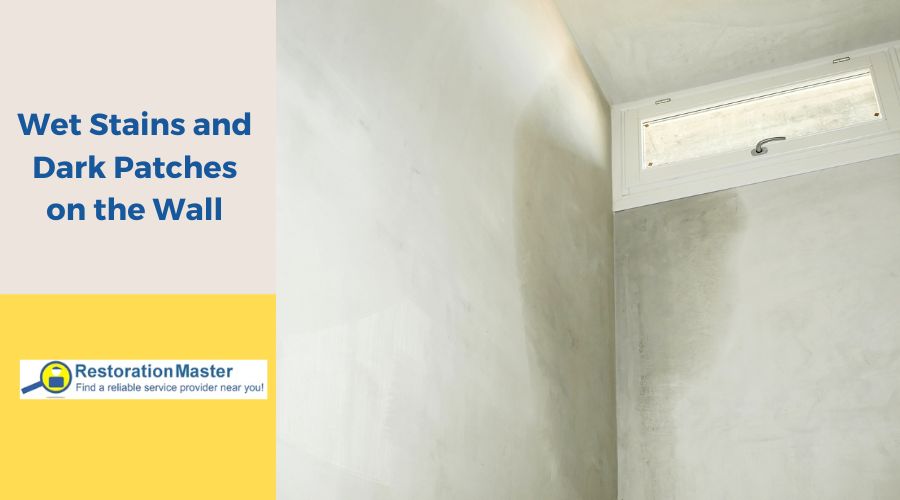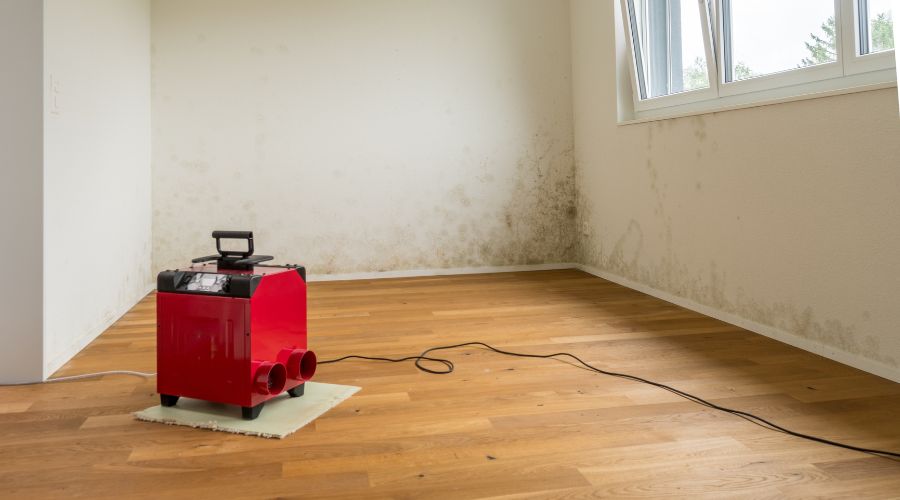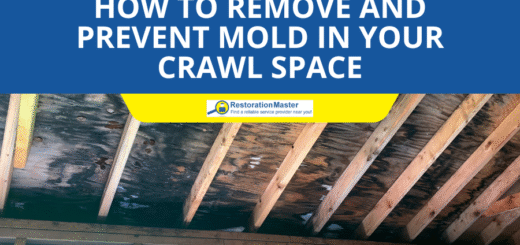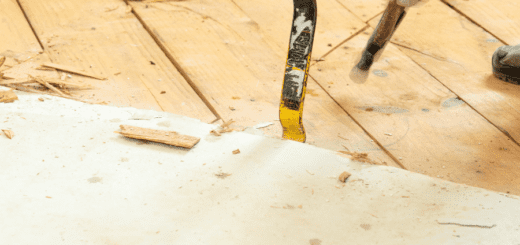How to Dry Water Damaged Walls-Video
Summary: To quickly dry wet walls, water damage restorationWater damage restoration is the professional process of clea... More companies utilize dehumidifiers and fans. Learn how these tools and techniques speed up the process and restore your walls effectively.
If you’ve dealt with water damage at your home or business, you understand the inconvenience and expense it takes to resolve the problem. In such a scenario, it’s crucial to promptly contact a water damage restoration company to initiate the remediation process. This immediate action is vital to prevent the damage from spreading and causing additional structural issues or moldMold is a type of fungus that grows in damp or humid conditi... More growth.
What Causes Wet and Damp Walls?
Wet walls can be caused by different things, such as:
- Leaking Pipes: This can be your water supply pipes, drainage pipes or the ones attached to appliances. Thus it is important to find leaks behind your walls.
- Damaged Gutters: When gutters aren’t working right, water gathers near walls, causing dampness. If gutters get clogged, water spills over and seeps into the walls, which can damage the foundation and make walls damp.
- Poor ventilationVentilation is the process of exchanging or circulating air ... More: When there is not enough airflow, it can trap moisture inside, leading to damp walls.
- Condensation: Moisture in the air can turn into water droplets on walls, especially in places like bathrooms and kitchens with little ventilationVentilation is the process of exchanging or circulating air ... More.
- Timber Decay: If there’s moisture in the walls, it can damage wooden parts like beams and studs.
- Improper Drainage: If water doesn’t drain away from the building properly, it can soak into the walls and make them damp.
- Penetrating Damp: This happens when there is already cracks and holes on the walls and whenever there is moisture or water damage, it can go deep into the materials and cause dampness.
How Does Water Get Drywall Wet?
Usually when water comes into a room at ground level, it will end up damaging your floor and floor covering. Eventually, the water will come up the wall or “wick up” because materials like drywall and wallpaper are porousPorous describes a material that contains small openings or ... More. The amount of damage that occurs depends on how your home is constructed, the amount of water that entered your home, and how high the water got on the wall material.
Drywall is highly absorbent due to its composition of gypsum and cardboard-like paper on both sides. It can draw in moisture, known as “wicking up,” for up to 30 inches, resulting in water seepageSeepage is the slow movement of water or other fluids throug... More on both sides of the wall. Typically, the interior side retains more water due to slower evaporationEvaporation is the process by which a liquid, such as water,... More through the drywall. While wall damage is often visible, sometimes there are no apparent signs of moisture within the wall.
How Long Can Moisture Stay in Walls?
Water can start damaging your home in just an hour or two after it enters. But it usually takes about two days for everything to dry completely. It’s important to act quickly to stop more damage, like moldMold is a type of fungus that grows in damp or humid conditi... More, and to dry things out fast.

How to Dry Water Damaged Walls?
The first step in handling wet walls is to decide if you will be tackling the issue yourself or if you will be calling a professional. If you would like to handle dryingDrying is the process of removing moisture from materials, s... More the walls yourself, here are some tips to follow so you can get the best possible results:
- If you have water damage due to a burst pipe, make sure to turn off the water source. You may need to hire a plumber to fix the broken pipe.
- To speed up the dryingDrying is the process of removing moisture from materials, s... More process, open all windows and doors. Also, use fans to move air around the wet walls. Dehumidifiers can help remove moisture from the air and from the walls as well.
- To make sure that water evaporates as quickly as possible, remove all molding and baseboards. Put the molding in a dry place so that it does not experience further damage. Any pictures or paintings should also be removed from the wall.
- If you have wallpaper, remove it. This does take time and patience; however, it is very important to do so as wallpaper contributes to creating a “seal” that keeps moisture in the wall. You can find wallpaper removal solutions in all hardware stores. They will dissolve the adhesive to help remove the wallpaper. Also, make sure to purchase 3”-6” broad knives to scrape the wallpaper once released.
Please note that dryingDrying is the process of removing moisture from materials, s... More out your walls takes time so do not rush to refinish them until they are dry. You can also use a moisture meterA moisture meter is a device used to measure the moisture le... More to tell when they are dry. Once the walls are fully dry, reverse the process and refinish the room. Look at all your removed items and check them for moisture and damage before you reinstall them.
It is very important to dry your wet walls quickly but also correctly. If you cannot dry your walls right away, do not let them sit. Make sure to call a water damage restoration specialist to help. They have the proper equipment, methods, and expertise to handle it.
How do Professionals Dry Wet Walls?

First, they will figure out the full extent of the damage caused by the water, using a non-invasive moisture meterA moisture meter is a device used to measure the moisture le... More. This device uses radio waves to test for water and they do not have to make holes in the wall.
Finding water in the walls
An infrared imaging (IR) camera can find water in the walls without the need to make holes in the wall materials as evaporationEvaporation is the process by which a liquid, such as water,... More from wet walls makes them cooler than dry walls. Once the professionals have identified that you have wet walls, they use specialized equipment to dry them.
If you have walls that are not insulated, the restorationRestoration is the process of returning a property to its pr... More professionals can dry the walls by using high-capacity air movers along every wall every 10 to 14 feet. They will ensure that the air movers remove moisture from the surface of the wall and evaporate it. As the moisture evaporates, more of the moisture will come to the surface.
Drying the walls
The professionals will usually install a low grain refrigerant dehumidifierA dehumidifier is a device that removes excess moisture from... More in the wet wall. Depending on how wet your wall is will depend on how many are used. This equipment causes the humidityHumidity is the amount of moisture or water vapor present in... More levels to go down which helps dry the wall and prevent moldMold is a type of fungus that grows in damp or humid conditi... More.
Sometimes, the restorationRestoration is the process of returning a property to its pr... More professionals will install an inner-wall dryingDrying is the process of removing moisture from materials, s... More system. This involves putting small holes above the sill plate to force air into the cavity of the wall. Studies have shown that this is the best and quickest way to dry walls that have had water damage.
Drying of walls if there is a moisture barrier
Finally, if there is a barrier to the moisture on the outside of the wall such as coatings or materials that prevent the movement of moisture from the walls, the plan to dry the walls may change.
LatexLatex is a natural or synthetic rubber material commonly use... More paints do not make a moisture barrier as they are permeable. However, glossy paints, enamel paint, or vinylVinyl is a durable synthetic plastic material commonly used ... More wall coverings create a full barrier. To get moisture to escape and walls to dry, technicians will need to make holes or remove them completely. Also, if there is plastic or foil in the walls, the wall itself will need to be removed so that moldMold is a type of fungus that grows in damp or humid conditi... More does not form, and the area can properly dry.
Drying insulated walls
For fiberglass insulationInsulation is a material used in buildings to reduce the tra... More with paper backing, you can use the inner-wall dryingDrying is the process of removing moisture from materials, s... More system as explained above. If your insulationInsulation is a material used in buildings to reduce the tra... More is foil-backed fiberglass, blown-in cellulose, or a Styrofoam material, it cannot be fully dried. In this case, you will need to get the damaged portion of the wall removed along with the insulationInsulation is a material used in buildings to reduce the tra... More so that you can dry it and moldMold is a type of fungus that grows in damp or humid conditi... More growth does not develop.
Look After the Drying System
Whatever system you end up using to dry your water damaged walls, it is important to monitor the progress. Any equipment used must operate without stopping for the dryingDrying is the process of removing moisture from materials, s... More process to work. Professionals will monitor the equipment at least once per day and take moisture measurements so that they know when the materials are fully dry. This is done by measuring the dryness against similar items that were unaffected in the structureStructure refers to the framework or components of a buildin... More. When the dryness level is equal, that means the dryingDrying is the process of removing moisture from materials, s... More is finished and the equipment can be removed.
Call the Water Damage Restoration Professionals

Have you experienced water damage at your home or business? Make sure to call water damage restoration professionals who can dry, clean, and restore your property back to its original state. Highly trained technicians will use the proper methods and equipment to remove all water from your home or business. You can rest assured as they use specialized water mitigation methods and equipment to ensure thorough dryingDrying is the process of removing moisture from materials, s... More and repairRepair is the act of fixing or restoring damaged property, m... More.












